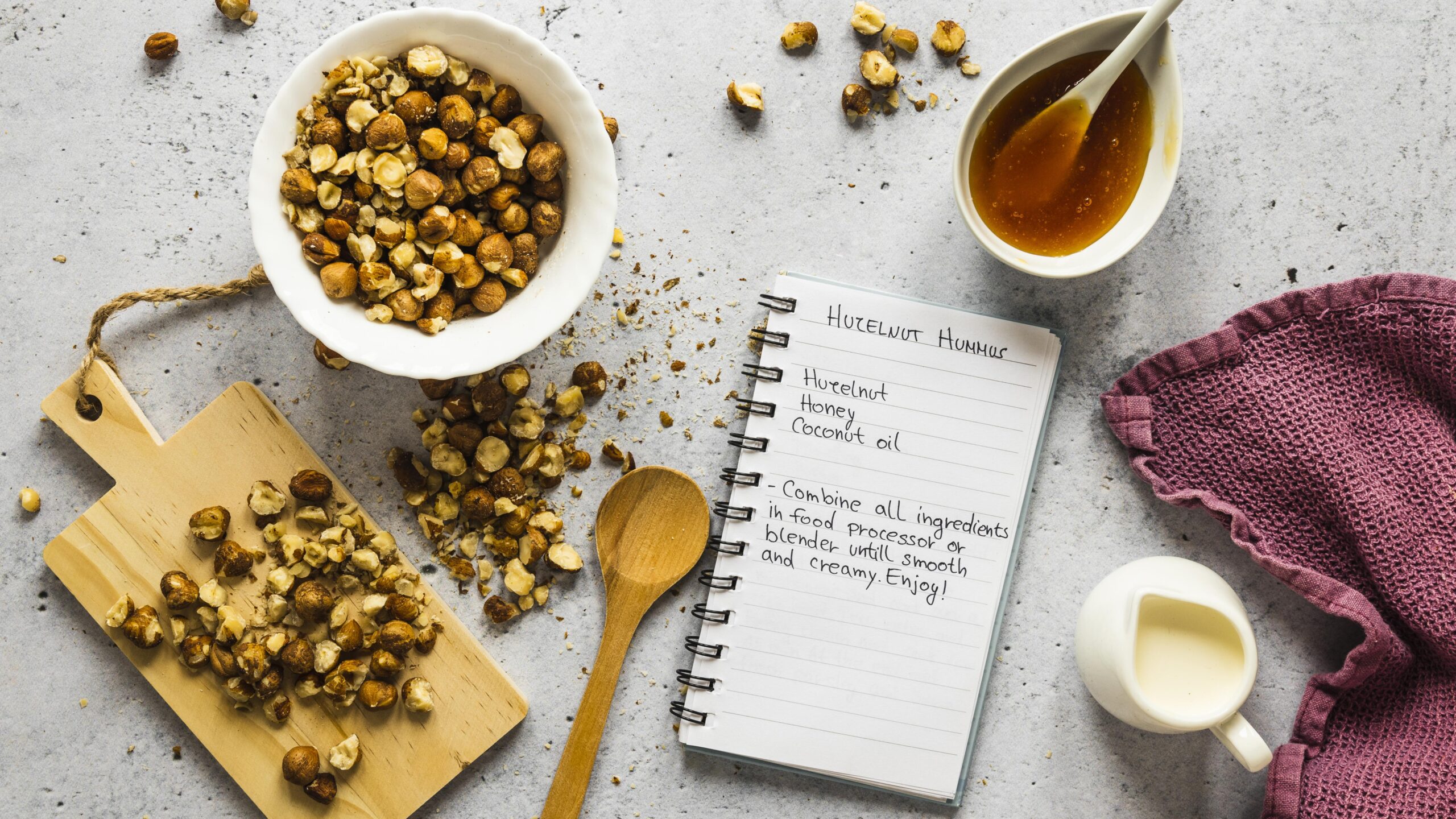Natural Ozempic Recipe
In an era where medications like Ozempic (semaglutide) dominate conversations around weight loss and metabolic health, many are exploring how to harness similar benefits through natural means.
The so-called “Natural Ozempic Recipe” isn’t about a miracle food—but a mindful blend of whole ingredients, lifestyle tweaks, and mindful eating designed to naturally stimulate GLP‑1, the body’s satiety hormone, enhance blood sugar regulation, and promote long-term wellness.
This blog post will guide you through the science, the foods, and the lifestyle strategies that support a natural GLP‑1 boost—giving you a practical, evidence-based “recipe” to feel fuller, eat less, and potentially manage weight and health more sustainably.

Understanding GLP‑1: Why It Matters
GLP‑1 (glucagon‑like peptide‑1) is a gut-derived hormone that plays several roles in metabolic health:
- Regulates blood sugar by enhancing insulin release when blood glucose is elevated
- Slows gastric emptying, prolonging fullness after meals
- Communicates satiety signals to the brain, reducing appetite and cravings
Ozempic and similar GLP‑1 receptor agonist medications replicate these effects with much greater potency—but they can be costly and may carry side effects such as nausea or gastrointestinal discomfort.
While no food or lifestyle habit can match medication in potency, research shows dietary and behavioral strategies can naturally elevate GLP‑1, supporting appetite control and metabolic health—especially when practiced consistently.
The “Natural Ozempic Recipe” Ingredients: Foods That Naturally Boost GLP‑1
1. Fiber-Rich Foods
High in soluble and fermentable fibers, these foods enhance fullness, stabilize blood sugar, and encourage GLP‑1 secretion via gut bacteria and short-chain fatty acids.
- Whole grains: oats, barley, whole wheat
- Legumes: beans, lentils, peas
- Fiber-rich vegetables: Brussels sprouts, broccoli, asparagus, artichokes, carrots
- Seeds & fruits: apples, pears, bananas, chia, flax.
2. Protein-Packed Options
Protein triggers GLP‑1 release, extending satiety and helping control appetite. Good sources include lean meats, fish, eggs (especially egg whites), dairy, legumes, nuts, and soy products.
3. Healthy Fats
Monounsaturated fats and omega-3s (e.g., from olive oil, avocados, fatty fish, nuts, seeds) slow digestion, support GLP‑1 secretion, and improve insulin sensitivity.
4. Probiotics & Fermented Foods
By fostering a healthy gut microbiome, these foods may support GLP‑1 synthesis and hormone balance. Good choices include yogurt, kefir, sauerkraut, kimchi, miso, and tempeh.
5. Polyphenols & Antioxidant-Rich Foods
Dark chocolate (70% cacao or higher), berries, and tea contain compounds that may indirectly support GLP‑1 activity and metabolic function.
6. Promising Natural Compounds (Supplements)
Certain plant-derived compounds have shown potential to modulate GLP‑1:
- Berberine (from plants like barberry): improves insulin sensitivity
- Cinnamon, curcumin (turmeric), ginger, ginseng, resveratrol, gardenia, bitter melon: small studies suggest possible use in promoting GLP‑1 secretion.
Lifestyle Strategies That Elevate GLP‑1 Naturally
1. Meal Sequence & Timing
- Eat protein and/or vegetables before carbohydrates to boost GLP‑1 and reduce blood sugar spikes.
- A hearty breakfast and smaller dinner may align with circadian rhythms to heighten GLP‑1 response.
2. Mindful & Slow Eating
- Eat slowly, chew thoroughly, and practice mindful eating to boost GLP‑1 release and fullness signals.
- Even physical chewing matters—e.g., shredded cabbage elicits higher GLP‑1 than when pureed.
3. Regular Physical Activity
- One session of moderate to high-intensity exercise can elevate GLP‑1 levels for up to 24 hours.
4. Stress Management & Sleep
- Chronic stress impairs GLP‑1 release via cortisol; managing stress (e.g., through mindfulness, nature, journaling) can help improve regulation.
- Quality sleep supports timely hormone release, including GLP‑1, enhancing appetite control.
5. Avoid Rigid Dieting
- Strict restriction amplifies “food noise” and disrupts satiety regulation. Balanced, intuitive eating—honoring real hunger, allowing occasional enjoyment—supports long-term control.

Weaving It All Into a Natural Ozempic Recipe
Here’s how to craft a daily pattern—your own Natural Ozempic Recipe—leveraging foods and habits that collaboratively elevate GLP‑1 and satiety.
Morning Ritual (e.g., 7–8 AM)
- Hearty, balanced breakfast:
- Bowl of oats + chia/flax seeds + berries + nut butter
- Eggs (or egg whites) with sautéed veggies (spinach, asparagus) and avocado
- Why? Combines fiber, protein, and healthy fats to gently stimulate GLP‑1 and slow digestion.
- Optional: 1 serving (⅓ cup) of dark chocolate nibs or grated 70% chocolate—rich in flavanols—enjoyed slowly.
Midday Meal
- Start with vegetables or salad (with olive oil)—eating fiber/fat first supports GLP‑1 response.
- Main protein: lean fish, chicken, tofu, or legumes with whole-grain sides.
- Mindful eating: slow pace, chew thoroughly, minimize distractions .
Snacks & Hydration
- Fill up on nuts (almonds, pistachios), avocado slices, or Greek yogurt with fruit.
- Optional supplements: berberine, cinnamon, curcumin, etc.—only after healthcare consultation.
- Stay hydrated—fiber works best with adequate water intake.
Dinner (Early Evening)
- Vegetables first, then lean protein with fiber-rich carbs.
- Keep meals smaller and lighter than lunch—fitting circadian GLP‑1 peaks.
- Wind down stress: maybe a short walk or relaxation technique to support hormone balance.
Daily Habits
- Movement: at least 20–30 minutes of moderate exercise daily (e.g., brisk walking, swimming, yoga).
- Mindful eating practice: slow, sensory-rich, attentive.
- Sleep: aim for consistent bedtime, 7–9 hours of quality sleep.
- Stress relief: journaling, meditation, time in nature, or hobbies.
Summary Table: Natural Ozempic Recipe Framework
| Component | Purpose/Effect |
| High-fiber foods | Slow digestion, promote GLP‑1 via SCFAs |
| Protein-rich meals | Increase satiety, GLP‑1 release |
| Healthy fats | Support fullness, insulin sensitivity |
| Meal sequence/timing | Optimize GLP‑1 response and blood sugar |
| Mindful eating | Enhance hormonal signals and reduce overeating |
| Exercise | Boost GLP‑1 for sustained effect |
| Sleep & stress control | Support hormonal balance and appetite control |
| Probiotics + polyphenols | Gut health, antioxidant support |
| Select supplements | Potential GLP‑1 modulators (pending consultation) |
Benefits of a Natural Approach vs. Medication
- Lower cost & greater accessibility: Whole foods and habits are more sustainable.
- Fewer side effects: No injections, nausea, or GI distress commonly associated with GLP‑1 agonists .
- Holistic wellness: Supports metabolism, gut health, mental well-being, and long-term weight balance.
- May complement GLP‑1 medications if prescribed—diet and lifestyle always enhance outcomes.
Final Thoughts
The Natural Ozempic Recipe is not about replicating the powerful effects of semaglutide overnight. Instead, it’s an evidence-based, doable, and rewarding approach to supporting your body’s natural satiety system—and cultivating a healthier relationship with food:
- Start small: Introduce fiber-rich breakfasts, try mindful meals, and gradually add exercise.
- Track patterns: Notice which foods or habits make you feel fuller longer—or reduce cravings.
- Seek support: A dietitian, health coach, or supportive community can reinforce habits.
- Stay flexible: Allow cravings, practice intuitive eating, and focus on overall sustainability—quality over rigidity.
When consistently followed, this recipe—rich in naturally GLP‑1‑supportive foods, mindful eating, movement, and self-care—can help quiet food noise, stabilize appetite, manage blood sugar, and gradually enhance weight and metabolic health.
References
.